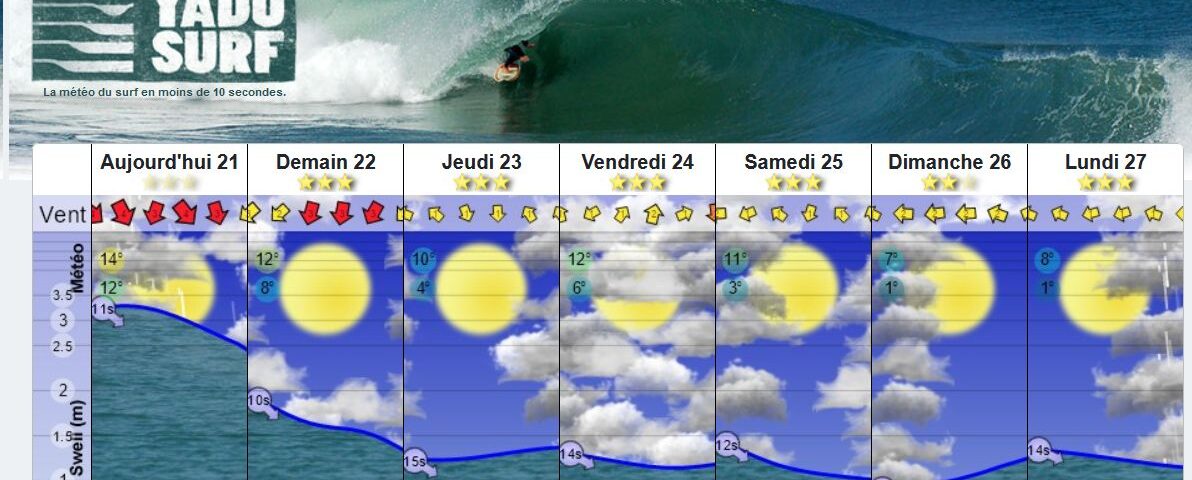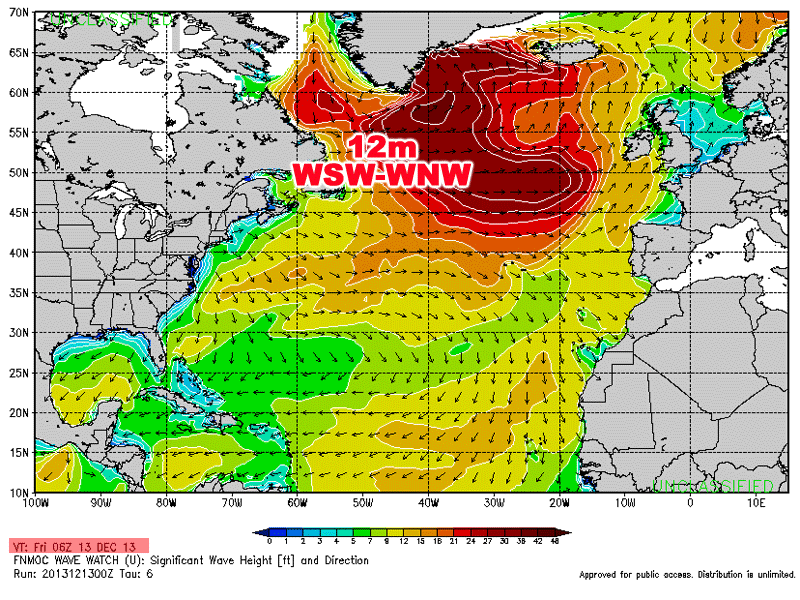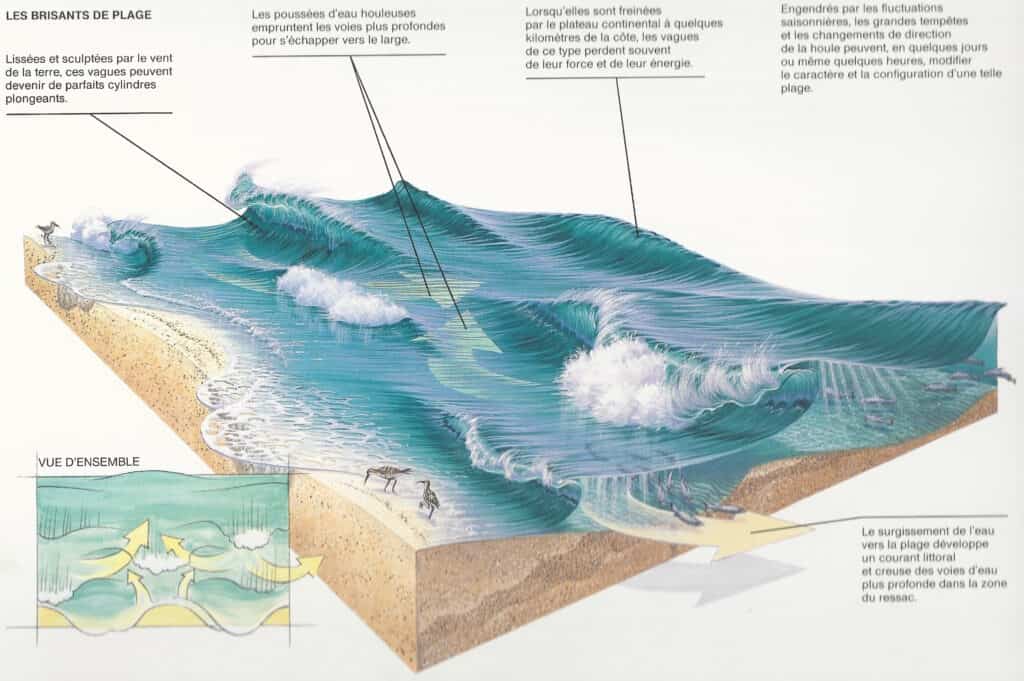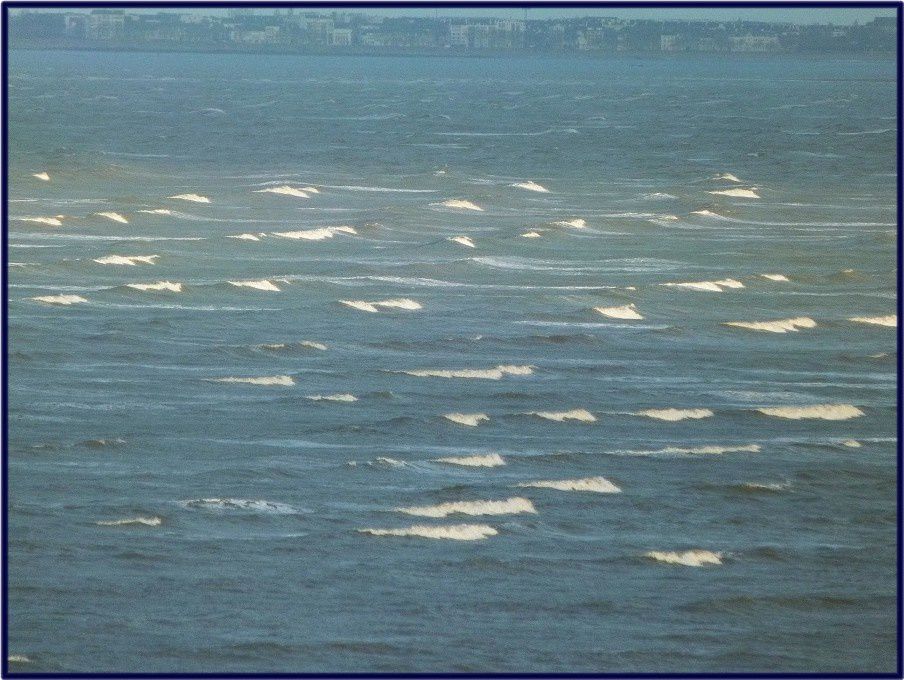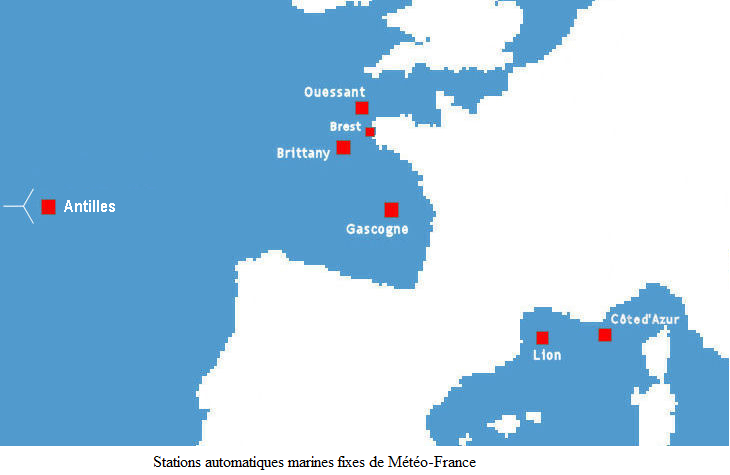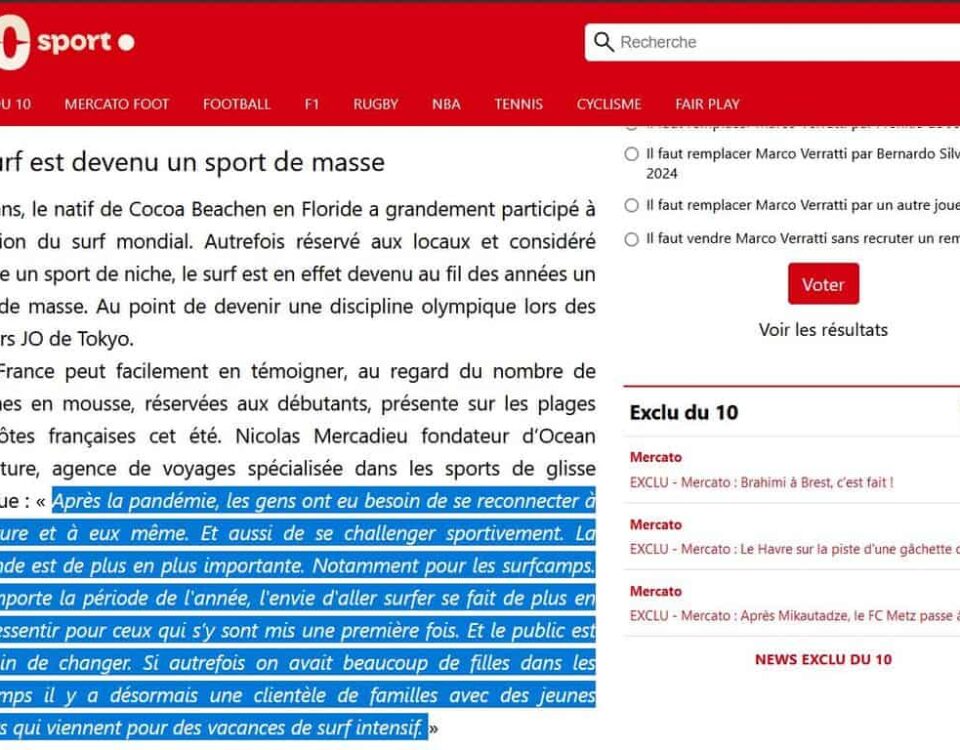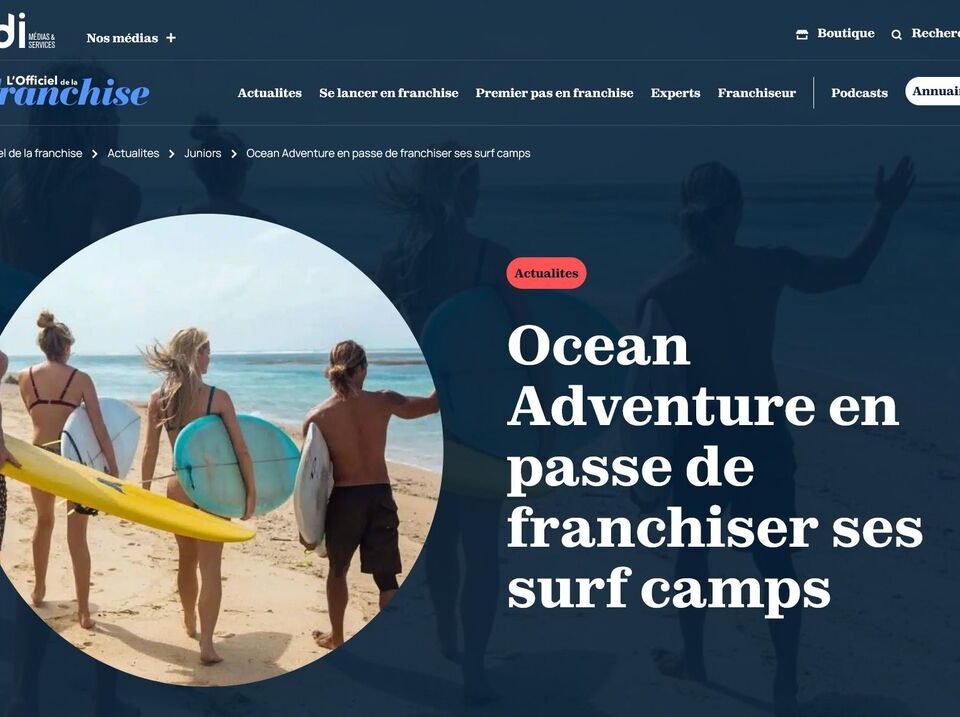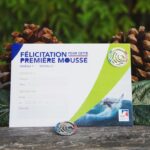
Learning to surf: Teaching objectives

Learn to surf fast ? 14 days with Sorelle Amore
Surfing, an activity enjoyed by thousands of enthusiasts in France, depends heavily on the quality of the waves. For surfers, the ability to forecast waves is essential. In France, several solutions exist to anticipate these marine conditions and interpreting them correctly is quite an art, which we are going to explore.
Contenus de la page
Watch out for webcams: surf the waves, not the net!
Surf forecasting is an essential skill for any surfer. Understanding when the next swell will reach your local beach can make the difference between a memorable session and a day of watching the sea without a wave. But how can you predict the arrival of decent waves? It involves a mixture of science, technology and traditional ocean intuition, but above all…
A real surfer is always ready! They move around the spot and get into the water even if it’s not ideal!
Wave forecasting models
France relies on high-precision ocean forecasting models. Institutions such as Météo-France use systems such as the WAVEWATCH III model, which simulates sea conditions based on wind and pressure forecasts. This model can predict the height, direction and period of waves several days in advance.
Personally, I look at the US Navy data because I like to see the evolution and orientation of the swell on ‘raw’ maps. See here the official FNMOC NAVY website with the animation
Oceanography for budding surfers
Oceanography is the study of the oceans and their complex phenomena. It is the key that enables surfers to read and understand the waves, this force of nature that fascinates and attracts. In this first chapter, we dive into the mysteries of the ocean and learn how to decipher the signs it sends us.
The sea is an open book for those who know how to interpret its language. The language of the tides, currents, waves and marine life. Each element plays its part in creating the perfect conditions for surfing.
The Tides
Tides are caused by the gravitational pull of the moon and sun. Understanding the tidal cycle is fundamental to surfing, as it affects wave height and strength. A rising tide can bring good waves, while a falling tide can weaken them.
The Currents
Sea currents are movements of seawater that can be generated by various factors, such as temperature differences, water salinity or winds. Surface currents have a direct effect on waves and can either strengthen or disperse them.
Wave formation
Waves are the result of energy transmitted by the wind to the surface of the sea. This energy travels in the form of swell over long distances until it reaches coastal areas, where it is transformed into breaking waves. Swell can be influenced by distant storms, pressure systems and even underwater obstacles such as sandbanks and reefs.
Reading the Waves
Learning to read the waves is essential for choosing the right time and place to surf. This involves observing the direction and size of the swell, the period between waves and the way they interact with the seabed. A good understanding of these elements allows the surfer to position himself ideally and catch the perfect wave.
This chapter is just the beginning of an ocean exploration. By understanding the basics of oceanography, surfers can develop the intuition to predict when and where the waves will be ideal for their next surf session.
Surf weather applications and websites
If you find the models presented above indigestible, we understand. Here you’ll find consumer sites and applications that help surfers plan their sessions, ranging from simple swell forecasts to more detailed analyses including wind direction and strength, swell period and water temperature.
Using these apps can greatly enhance the surfing experience by helping to choose the best time and place to surf. Here is an updated list of weather forecasting applications for surfing in France, with detailed descriptions and corresponding URLs:
yadusurf.com
7-day forecasts for surf, weather and tide conditions on the French coast.
Intuitive representation of data with the Surfometer.
surf-report.com
7-day swell and wind forecasts, photos of the day for spots in France.
New version of the application to accompany surf sessions.
allosurf.net
Forecasts for 1800 beaches and surf, kitesurf and windsurf spots around the world.
Long-range forecasts up to 16 days and HD forecast simulations.
surf-sentinel.com
Real-time weather forecasts for over 250 spots in France, up to 7 days in advance.
easyREPORT wave rating system.
Save your favourite spots.
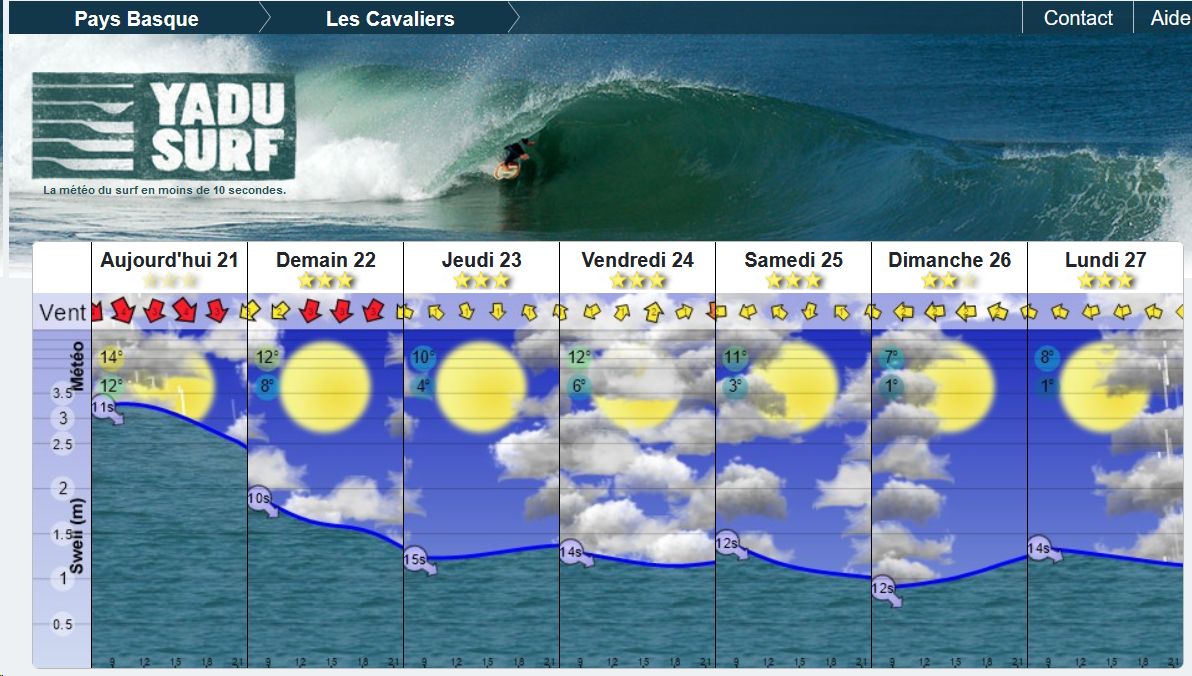
Thursday, Ya bon surf! North-westerly swell. Offshore wind, 1m30 swell with a 15 second period, which will give the Cavaliers waves of around 1m80!
To read the weather surf bulletins, look for the following key information:
- Wave Height: Indicates the size of the waves.
- Period: The time between each wave, which affects surf quality and wave size. 10s is a normal period whereas 15s will increase their size by almost 30%!
- Swell Direction: Shows where the waves are coming from.
- Wind Speed and Direction: Has an impact on surf conditions; offshore winds generally improve wave quality.
- Wave Quality: Often rated from 0 to 10, indicating overall surf conditions.
Save your favourite spots in these applications to receive updates and alerts when conditions are ideal for surfing.
What are the different types of seabed on which waves break?
Waves break differently depending on the type of seabed, also known as the “substrate”. Here are the main types of seabed that influence wave formation:
Sandy bottom (beach break)
Sandy beaches have bottoms that change and move with the currents and tides, which can change the shape of the waves. The waves are generally less powerful and more suitable for beginners.
Coral reefs
Waves breaking over coral reefs are often sharper and faster. They can create tubes and are popular with experienced surfers, but they can also be more dangerous due to the shallower water and sharp coral structures.
Rock bottom
As with coral reefs, rocky bottoms can produce high-quality waves. Rocks offer a stable relief that doesn’t change as much as sand, forming consistent and often powerful waves.
Mix of sandy seabed and rocks (point break)
They can be found all along the Atlantic seaboard, particularly in Brittany and Morocco.
Artificial Reefs
Some locations use artificial reefs to improve wave quality. These structures are designed to mimic natural reefs and can be adjusted to produce different types of waves.
River mouths
Waves breaking near river mouths can be affected by river sediments and currents, which can create unique surfing conditions.
The type of seabed is a key factor in wave formation and determines the shape, size and power of the waves that break, as well as how dangerous and adaptable they are for surfers of different abilities.
How does the tide affect wave quality?
The tide plays a crucial role in wave quality for several reasons:
Water depth
The tide affects the depth of water above the seabed. Variations in depth can make a surf spot excellent at some times and mediocre at others.
Wave Form
At high tide, the deeper water can produce slower, less hollow waves. At low tide, waves can be faster and more hollow, especially if they break on a rocky bottom or reef.
Position of the breaker
The height of the tide determines where the waves will start to break. This can influence the distance surfers have to paddle to reach the breaking point.
Seabed exhibition
Low tides sometimes expose reefs or rocks that are not visible at high tide, which can create dangerous conditions or change the shape of the wave.
Currents
Tides generate currents that can affect the strength and direction of waves, as well as the effort required for surfers to maintain their position.
Access to Spotlights
Some surf spots are only accessible at certain tides, especially if access is limited by rocks or reefs that are submerged at high tide.
Energy Concentration
At low tide, the energy of the waves is concentrated in a narrower area, which can make them more powerful.
As a result, surfers often need to plan their sessions around the tide times to take advantage of the best conditions their favourite spot has to offer.
Here is the tide calendar for the Port of Bayonne:
Does the wind affect wave quality?
Yes, the wind has a significant influence on wave quality:
Wave formation
As mentioned earlier, wind is the main factor that creates waves in the open ocean through the process of transferring energy from the air to the water.
Water surface
The wind blowing across the surface of the ocean can make the water rough or smooth. A strong wind blowing against the direction of the waves can make them choppy and disordered.
Offshore and Onshore Wind
Offshore wind is generally good for wave quality; it makes them cleaner and can contribute to the formation of tubes, as it pushes the top of the waves, allowing them to rise more steeply and break more clearly.
Onshore wind (coming from the sea) tends to deteriorate wave quality by making them more mossy and less structured, making surfing more difficult and less enjoyable.
Side Wind
A crosswind can push the waves in one direction, which may or may not be beneficial, depending on the configuration of the spot and the direction in which the waves are being pushed.
Local Wind and Storm Wind: Locally generated winds can affect the surface of waves, while offshore storm winds can create new swells that travel long distances to reach the coast with more force.
Surfers often look for conditions where the wind is light and offshore to enjoy better quality waves.
And what about the sheep?
When my 13-year-old son and I were getting out of the water, a surfer asked him: “Aren’t there too many sheep?” Not knowing what they were, he said no, no, not too many…
That’s a sheep, but there aren’t many of them in Biarritz… but for a surfer. What follows is a sheep. A collection of scum formed by an off or side shore wind! This gives waves of low quality, not very powerful!
French wave measurement resources
The Brest or Gascony buoys are often mentioned by surfers. Other elements listed below are much less so.
Surveillance buoy systems
Real-time data from buoys and marine beacons is essential for monitoring sea conditions. They measure wave height, wave periodicity and direction of origin. This data is transmitted in real time to monitoring centres, providing a basis for accurate forecasts of sea conditions.
Computer Modelling and Satellites
Advanced computer models play an indispensable role in wave forecasting. Using satellite data and live observations, French scientists are developing predictive models that simulate the behaviour of waves under various weather conditions. These models make it possible not only to forecast wave height and strength, but also to anticipate potentially dangerous storms.
Coastal Sensor Networks
Alongside buoys, France is deploying networks of coastal sensors. These instruments, fixed to the seabed or integrated into coastal infrastructures, record water movements and provide additional information to refine wave forecasting models.
Forecasting applications for the public
Wave forecasting technology is not just a matter for specialists. Mobile applications and websites are being developed to make this information accessible to the general public, including surfers, yachtsmen and marine professionals, enabling them to interpret the data and plan their activities based on the forecasts.
Research centres and international collaboration
French research centres such as SHOM (Service Hydrographique et Océanographique de la Marine) are at the forefront of operational oceanography. They work closely with international partners to improve wave forecasting methods and share best practice.
Training and Education
Training is an essential aspect of the French strategy. Educational programmes have been set up to train new oceanographers and meteorologists, thus ensuring that the next generation of oceanographers and meteorologists are skilled in data interpretation and wave forecasting.
Coastal management policies
French coastal management policies incorporate wave forecasting data to protect coastal zones. This includes the development of storm-resistant infrastructure and the implementation of emergency protocols in the event of extreme conditions.
Sustainable Development and Wave Forecasting
Finally, wave forecasting is also essential in the context of sustainable development. By anticipating coastal erosion and the risks associated with climate change, France is committed to protecting its coasts while making responsible use of marine resources.
In short, France’s wave forecasting solutions are a sophisticated blend of technology, scientific collaboration and public policy. By using a multidisciplinary approach and investing in research and development, France continues to strengthen its ability to predict and interpret sea movements.
In conclusion, predicting when conditions will be optimal for surfing requires a mix of scientific understanding, technological tools and local knowledge. By paying attention to weather patterns, swell reports and tidal movements, you can maximise your chances of being in the water when conditions are ideal.
Frequently asked questions?
How do I know if there will be waves tomorrow?
Get up early and check it out before the wind changes!
What’s the best surf forecast site?
As mentioned in the introduction, raw data and maps are more accurate than general public interpretations.
Does the full moon affect surfing conditions?
Yes, there are a lot more tarous wolves in the water! No kidding, there are two things surfers like about a full moon. Firstly, the tides are higher than usual. This can open up new possibilities for spots. Two, some people surf at night, under a full moon 🙂
Can I learn to surf without understanding wave forecasts?
Absolutely, these two things have nothing to do with each other. But like racing drivers, at some point we’re going to take an interest in the car and what’s under the engine.
How accurate are surf forecasts?
I’m probably wrong, but let’s say 50 to 70%. Not to mention the fact that sometimes it sucks and you still manage to catch magic waves. The opposite is also possible. That’s the magic of surfing!
What do surfers mean when they talk about “ground swell’?
You see the bottom, well, that’s where it is! Go and see… No kidding, I’ve never heard of that!

